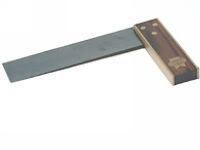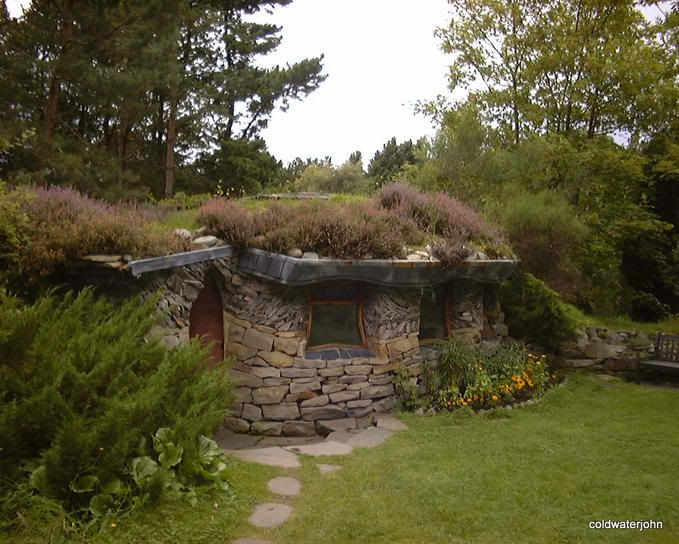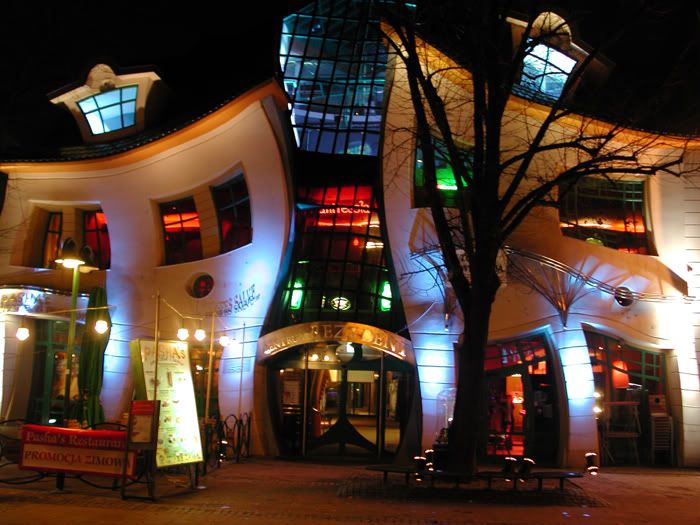The Normality Heuristic
I got a surprise a few months ago from one of those "word of the day" sources. Did you know what the word "normal" means? From The Free Dictionary:
normal (nôrml) adj.; 11. Conforming with, adhering to, or constituting a norm, standard, pattern, level, or type; typical.
Pretty standard, right? Ah, but looksie whence the word originates:
[Middle English, from Late Latin normlis, from Latin, made according to the square, from norma, carpenter's square. . . .]
(I emboldened.)

So the word most used to describe social and behavioral conformity originally referred to a tool used to judge right angles. Interesting. Think also of the myriad of words that similarly and (mostly) positively denote conformity: straight, upright, level and on the level. Those last takes normal to a new, well, level of conformity, implying that what is normal is also aligned with the gravitational horizontal.

Heck, let's go just a bit further, shall we? Combine a level surface (as determined by the spirit level above) with a downward line defined by the plumb bob below, and you get the right angle defined by the carpenter's square. Normality achieved!

Ah, but why stop there? Take another ancient tool, the construction compass. You can use it to inscribe a perfect circle.

When you do, you necessarily "center" the circle, pivoting around that center as the circumference is defined. You can also use the term centered to describe behavioral conformity!
It gets better. Now let's think of terms used to describe a lack of behavioral or social conformity. Crooked people lack a proper respect for legality. Where mental states are in question, one can be described as a little off, either off bubble from the level or off the center of the circle. For that matter, consider the literal definition of eccentric:
1. Departing from a recognized, conventional, or established norm or pattern. . . .
2. Deviating from a circular form or path, as in an elliptical orbit.
3.
a. Not situated at or in the geometric center.
b. Having the axis located elsewhere than at the geometric center.
It gets worse. Many of the words we use to describe each other -- especially those with negative connotations -- describe damaged goods. Crazed or crazy glass is broken but still in one piece, the cracks visible. Non-planar surfaces are warped. Ropes with damaged strands bind and become kinky.
Here I go on and on about what you already know, right? Well, now I shall come to the point. All of these terms, derived from geometry, have nothing to do with actual behavior. An outward willingness to follow rules has nothing to do whatsoever with straight lines drawn on paper. Nowhere on a behaviorally unusual person will you find a circle with its center point slightly shifted. No, we grab these words from the graphic arts and apply them to situations we can recognize, but which we find difficult to describe absolutely. They are metaphors for behavior, not descriptors. They are heuristics, simple concepts we apply to complex situations that allow us to communicate the situations with each other.
Ah, but not only do these geometrical concepts not apply to people, they don't exist in nature. Really. How many trees boast perfectly straight branches? What rocks are perfectly flat? If you wish to realistically draw a natural scene, the straight line is about the last one you'll find yourself drawing.
We use the level, the plumb bob, the compass and the square to create constructs that exhibit straight lines and flat surfaces. Why? Now that's a good question. For the most part, it helps to insure that the construct is sound. An engineer can estimate the load force on a wall if it happens to be perpendicular to the floor; any deviation from perpendicular shifts the load forces to far less predictable places. When those forces are not properly considered, houses fall down. For that reason, getting lines straight and level is pretty important. Therefore, the act of sighting down a wall and seeing if it deviates from that line of sight is a pretty effective means of ensuring the safety of that wall, of determining damage or poor construction.
Furthermore, the building materials with which we construct our structures have geometric principals built into them as a consequence of mass production. It's a relatively simple matter to cut a straight board at a mill's saw; you just shove the tree through the whirling blade. If it tends to bend, the wood will bind the blade and stop the process, sometimes catastrophically. Likewise, you can turn the tree on a spindle and shave flat sheets of wood. These can easily be glued, layered and pressed into pretty darned flat sheets of plywood.
Which brings me to the final point. When the load forces are considered but straight lines are still eschewed, buildings get interesting. Our neighbors recently showed off their newly remodeled house, the centerpiece of which one finds in the master bath. The shower and toilet are surrounded by thick glass enclosures . . . curved enclosures. He described the headache of locating a manufacturer willing to build the forms necessary to melt the glass sheets precisely into the desired shape. He also mentioned the factory had to do this six times just to get the two curved doors finished -- several attempts ended in failure.
He would not share how much those doors cost, but damn, are they cool.
Here's a photo of another such building at an intentional community in England.

The Meditation Room
at The Findhorn Foundation
This building flows. It doesn't stand upright against the organic patterns surrounding it, but rather gives in to them, allows these patterns of growth and chaos to playfully guide its walls and windows, its door and roof. By using what appear to be found building materials, the builder was able to abandon the factory-stamped imprimature of the mass produced and homogenous Home Depot fair. Yes, he or she had to select each of those wall stones individually. Yes, he or she had to custom cut and fit those window panes into the un-straight frames. And he or she had to overbuild to ensure the structure would remain sturdy enough to protect would-be meditators from collapse.
And now, prepare to have your minds melted:

The Krzywy Domek
Behold The Krzywy Domek, which roughly translates as The Crooked House, in Sopot, Poland. Please, click on that link and browse through the pictures, a few of which looked photoshopped. Our brains are simply not trained to follow the curves of a melting candle when applied to a building, let alone to measure the precise angles and curves necessary to construct such madness. I suspect it could not be done with the ancient tools depicted above, but needed fancy lasers and computers to check and double-check the progress as it was erected.
The Krzywy Domek is not normal. It is not straight. It is not plumb. It is not, though, warped; consider the difficulty of walking on a floor built with the same disregard for traditional geometry exhibited in the walls. That would render the building unusable, at least by humans.
But it is interesting, and for exactly the same reason that many people are interesting, because they simply aren't normal.
normal (nôrml) adj.; 11. Conforming with, adhering to, or constituting a norm, standard, pattern, level, or type; typical.
Pretty standard, right? Ah, but looksie whence the word originates:
[Middle English, from Late Latin normlis, from Latin, made according to the square, from norma, carpenter's square. . . .]
(I emboldened.)

So the word most used to describe social and behavioral conformity originally referred to a tool used to judge right angles. Interesting. Think also of the myriad of words that similarly and (mostly) positively denote conformity: straight, upright, level and on the level. Those last takes normal to a new, well, level of conformity, implying that what is normal is also aligned with the gravitational horizontal.

Heck, let's go just a bit further, shall we? Combine a level surface (as determined by the spirit level above) with a downward line defined by the plumb bob below, and you get the right angle defined by the carpenter's square. Normality achieved!

Ah, but why stop there? Take another ancient tool, the construction compass. You can use it to inscribe a perfect circle.

When you do, you necessarily "center" the circle, pivoting around that center as the circumference is defined. You can also use the term centered to describe behavioral conformity!
It gets better. Now let's think of terms used to describe a lack of behavioral or social conformity. Crooked people lack a proper respect for legality. Where mental states are in question, one can be described as a little off, either off bubble from the level or off the center of the circle. For that matter, consider the literal definition of eccentric:
1. Departing from a recognized, conventional, or established norm or pattern. . . .
2. Deviating from a circular form or path, as in an elliptical orbit.
3.
a. Not situated at or in the geometric center.
b. Having the axis located elsewhere than at the geometric center.
It gets worse. Many of the words we use to describe each other -- especially those with negative connotations -- describe damaged goods. Crazed or crazy glass is broken but still in one piece, the cracks visible. Non-planar surfaces are warped. Ropes with damaged strands bind and become kinky.
Here I go on and on about what you already know, right? Well, now I shall come to the point. All of these terms, derived from geometry, have nothing to do with actual behavior. An outward willingness to follow rules has nothing to do whatsoever with straight lines drawn on paper. Nowhere on a behaviorally unusual person will you find a circle with its center point slightly shifted. No, we grab these words from the graphic arts and apply them to situations we can recognize, but which we find difficult to describe absolutely. They are metaphors for behavior, not descriptors. They are heuristics, simple concepts we apply to complex situations that allow us to communicate the situations with each other.
Ah, but not only do these geometrical concepts not apply to people, they don't exist in nature. Really. How many trees boast perfectly straight branches? What rocks are perfectly flat? If you wish to realistically draw a natural scene, the straight line is about the last one you'll find yourself drawing.
We use the level, the plumb bob, the compass and the square to create constructs that exhibit straight lines and flat surfaces. Why? Now that's a good question. For the most part, it helps to insure that the construct is sound. An engineer can estimate the load force on a wall if it happens to be perpendicular to the floor; any deviation from perpendicular shifts the load forces to far less predictable places. When those forces are not properly considered, houses fall down. For that reason, getting lines straight and level is pretty important. Therefore, the act of sighting down a wall and seeing if it deviates from that line of sight is a pretty effective means of ensuring the safety of that wall, of determining damage or poor construction.
Furthermore, the building materials with which we construct our structures have geometric principals built into them as a consequence of mass production. It's a relatively simple matter to cut a straight board at a mill's saw; you just shove the tree through the whirling blade. If it tends to bend, the wood will bind the blade and stop the process, sometimes catastrophically. Likewise, you can turn the tree on a spindle and shave flat sheets of wood. These can easily be glued, layered and pressed into pretty darned flat sheets of plywood.
Which brings me to the final point. When the load forces are considered but straight lines are still eschewed, buildings get interesting. Our neighbors recently showed off their newly remodeled house, the centerpiece of which one finds in the master bath. The shower and toilet are surrounded by thick glass enclosures . . . curved enclosures. He described the headache of locating a manufacturer willing to build the forms necessary to melt the glass sheets precisely into the desired shape. He also mentioned the factory had to do this six times just to get the two curved doors finished -- several attempts ended in failure.
He would not share how much those doors cost, but damn, are they cool.
Here's a photo of another such building at an intentional community in England.

The Meditation Room
at The Findhorn Foundation
This building flows. It doesn't stand upright against the organic patterns surrounding it, but rather gives in to them, allows these patterns of growth and chaos to playfully guide its walls and windows, its door and roof. By using what appear to be found building materials, the builder was able to abandon the factory-stamped imprimature of the mass produced and homogenous Home Depot fair. Yes, he or she had to select each of those wall stones individually. Yes, he or she had to custom cut and fit those window panes into the un-straight frames. And he or she had to overbuild to ensure the structure would remain sturdy enough to protect would-be meditators from collapse.
And now, prepare to have your minds melted:

The Krzywy Domek
Behold The Krzywy Domek, which roughly translates as The Crooked House, in Sopot, Poland. Please, click on that link and browse through the pictures, a few of which looked photoshopped. Our brains are simply not trained to follow the curves of a melting candle when applied to a building, let alone to measure the precise angles and curves necessary to construct such madness. I suspect it could not be done with the ancient tools depicted above, but needed fancy lasers and computers to check and double-check the progress as it was erected.
The Krzywy Domek is not normal. It is not straight. It is not plumb. It is not, though, warped; consider the difficulty of walking on a floor built with the same disregard for traditional geometry exhibited in the walls. That would render the building unusable, at least by humans.
But it is interesting, and for exactly the same reason that many people are interesting, because they simply aren't normal.